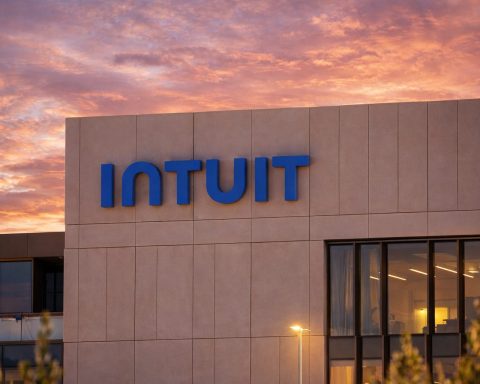- Strong Q3 performance: Marsh & McLennan Companies (MMC) reported third-quarter revenue of $6.4 billion, up 11% year-over-year (4% underlying), with adjusted net income of $911 million ($1.85 per share, +11%) [1]. Its Risk & Insurance Services segment saw revenue jump 13% to $3.9 billion, while consulting revenue rose 9% to $2.5 billion [2]. The results slightly beat analyst estimates (EPS of $1.85 vs. $1.79 expected) [3], and CEO John Doyle noted the quarter “tracked with expectations” [4].
- Rebrand to “Marsh”: This week, the 152-year-old firm announced it will drop “McLennan” and rebrand as simply “Marsh” effective January 2026 [5]. All four divisions – Marsh, Guy Carpenter, Mercer, and Oliver Wyman – will adopt the Marsh brand by 2027 in a unified identity [6]. As part of the overhaul, a new Business and Client Services (BCS) unit is being launched to centralize technology, data, and operations, leveraging AI and analytics to enhance client services [7]. (Notably, MMC’s NYSE ticker will change to “MRSH” in Jan. 2026 [8].)
- Stock underperforms in 2025:MMC stock has lagged this year – shares are down ~4% year-to-date [9] and about –8% over the past 12 months [10], recently trading around $204. The stock dipped ~1–1.5% after the Q3 earnings release [11]. However, long-term investors have seen robust gains: MMC boasts a five-year return of ~96%, underscoring “long-run resilience” despite short-term volatility [12]. The company also pays a quarterly dividend of $0.90 (yield ~1.8%) [13].
- Analysts’ outlook: Wall Street is mixed on Marsh & McLennan. The stock carries a “Hold” consensus – roughly 7 Buy, 9 Hold, and 2 Sell ratings – with an average price target around $237 [14] (about 15–20% above the current price). Recent targets range from ~$222 (Wells Fargo, Equal Weight) to as high as $257 (UBS, Buy) [15]. Notably, J.P. Morgan upgraded MMC to “Overweight” (bullish) in October with a $242 target [16], citing solid fundamentals, while others like Morgan Stanley and Wells have stayed neutral. A popular valuation narrative pegs MMC’s “fair value” near $228.53, suggesting the stock may be undervalued if its fundamentals hold steady [17].
- Industry trends: Marsh & McLennan’s results reflect broader insurance market momentum. Insurance spending rebounded in Q3 after a lull amid tariff-policy uncertainties [18], boosting brokerage revenues. However, pricing in some areas is moderating – for instance, property insurance rates have softened, and intense competition in core markets remains a risk [19]. In reinsurance, abundant capital and lighter catastrophe losses are driving expectations of rate declines heading into 2026; J.P. Morgan projects further price drops after property-cat rates already fell 5–15% in early 2025 [20]. On the upside, the growing complexity of global risks (cyber threats, climate change, geopolitical uncertainty) is spurring demand for risk advisory and analytics, a trend that could support MMC’s long-term growth [21]. The company’s consulting arms are also active – e.g. Mercer’s latest Global Pension Index highlights pressing retirement system reforms [22] – showcasing Marsh & McLennan’s role in tackling emerging challenges across insurance and consulting.
Q3 2025 Earnings: Solid Growth and an 11% Profit Jump
Marsh & McLennan delivered a strong third quarter, topping expectations on both the top and bottom lines. Revenue reached $6.4 billion, up 11% from a year ago (4% on an underlying, constant-currency basis) [23] [24]. This was driven by double-digit growth in its core insurance broking unit and steady gains in consulting. The Risk & Insurance Services division (which includes its Marsh insurance brokerage and Guy Carpenter reinsurance arm) saw revenue surge +13% year-over-year to $3.9 billion [25], boosted by firm insurance pricing earlier in the year and a rebound in client demand. Meanwhile, the Consulting segment (Mercer and Oliver Wyman) generated $2.5 billion in revenue, up +9% [26], as corporate clients continued to seek advice on healthcare, wealth, and strategic management amid economic shifts.
On the profitability front, Marsh & McLennan’s adjusted operating income climbed +13% (to $1.4 B) and adjusted EPS came in at $1.85, an 11% jump from a year ago [27] [28]. This beat analyst consensus of roughly $1.79 [29]. GAAP net income was $747 million ($1.51 per share) [30], roughly flat year-over-year, as the firm recorded some accounting charges – but on an adjusted basis, earnings growth was robust. Margins improved too: return on equity stands near 32% [31], reflecting efficient use of capital.
CEO John Doyle expressed satisfaction with the performance, stating “Our third quarter results were solid and tracked with expectations” [32]. He highlighted 11% revenue growth (4% underlying) and noted that adjusted earnings growth kept pace [33]. Management pointed to strength in the insurance segment: clients’ “spending on insurance recovered” during the quarter after a period of uncertainty around U.S. trade tariffs [34]. In other words, businesses that had delayed or reduced insurance purchases earlier in the year (amid geopolitical and economic jitters) resumed activity, benefiting brokers like Marsh.
Notably, Marsh, the insurance brokerage unit, saw 16% revenue growth in Q3 (on a GAAP basis, +4% underlying) [35]. Growth was broad-based, with U.S./Canada up 3% underlying and international markets up 5% (Asia-Pacific +6%, EMEA +5%) [36]. This indicates resilient demand globally for insurance solutions and risk management. Guy Carpenter, Marsh’s reinsurance brokerage, grew more modestly at +5% [37], but analysts note that was expected given a stabilizing reinsurance pricing environment. On the consulting side, Mercer (HR and investments consulting) and Oliver Wyman (strategy consulting) each posted high single-digit revenue increases [38], aided by projects in areas like organizational transformation and risk analytics. Overall, the diversified business model – spanning insurance broking, reinsurance, employee benefits, and strategic consulting – helped MMC achieve 11% total revenue growth despite a mixed economic backdrop.
The company did not issue formal forward guidance in its Q3 report, but nine-month results hint at a solid full-year trajectory: year-to-date September revenue was $20.4 B (+11% vs. 2024) and adjusted EPS $7.63 (+9%) [39]. Marsh & McLennan’s ability to grow in the high single digits on an underlying basis this year showcases resilience as it navigates inflation, interest rate changes, and geopolitical headwinds. In fact, the firm’s risk advisory and insurance services are often in higher demand during volatile times – clients turn to brokers for help managing new exposures (from cyber attacks to supply chain disruptions). Marsh’s own research has been highlighting such issues; this week its Mercer unit released a Global Pension Index study to guide governments on retirement system risks [40], and an Oliver Wyman partnership aims to streamline M&A deal execution for clients [41]. These moves underscore how MMC’s expertise stays relevant as the risk landscape evolves.
Stock Check: MMC Shares Lag in 2025, Despite Long-Term Gains
Despite the healthy Q3 results, MMC’s stock reaction was muted. In fact, shares fell about 1.4% on the day of the earnings report [42]. The dip suggests investors had largely anticipated the solid quarter, or they may be focusing on near-term headwinds. At around $203–$205 per share, Marsh & McLennan is trading closer to its 52-week lows (~$195) than its highs (~$248) [43]. The stock is off roughly –8% over the past year [44] and –4% year-to-date 2025 [45], underperforming the broader market. For context, the S&P 500 is modestly up over that span, so MMC has lagged.
Why the weakness? One factor is valuation and interest rates – as a steady cash-generative company, Marsh & McLennan’s stock often trades inversely to bond yields. With interest rates surging in 2022–2023, many insurance and financial stocks saw pressure. Indeed, MMC’s stock hit a 2023 peak near $190 in early February, then slid below $170 by spring (when rate fears spiked), before recovering above $200. As of mid-October 2025, it sits around $204, which gives a forward P/E near 21–22 and a dividend yield of ~1.8% [46]. That yield is attractive vs. peers, but the stock isn’t “cheap” on earnings – perhaps explaining some hesitation.
Another overhang has been broad market rotation. Investors in 2025 have chased high-growth tech stocks on AI optimism, while some insurance broker stocks underperformed due to concerns of peaking insurance rates. Marsh & McLennan was not immune to this rotation out of defensive names. Additionally, MMC faces a tough comparison to an exceptionally strong 2021–2022 period when insurance pricing was red-hot; as those tailwinds normalize, growth is naturally slowing. The Q3 report did show underlying growth of 4%, indicating some moderation after several quarters of higher rate-fueled growth.
That said, long-term shareholders have been handsomely rewarded. Over five years, MMC stock has nearly doubled (+95% total return) [47], vastly outperforming the insurance sector average. This performance reflects the company’s consistent earnings expansion and shareholder-friendly moves (like share buybacks – MMC repurchased $400 M of stock in Q3 alone [48]). Marsh & McLennan’s beta is around 0.8 [49], meaning it tends to be less volatile than the market – a plus for risk-averse investors. The firm’s steady dividend (raised to $0.90 per quarter, or $3.60 annually) [50] adds to total return, and its payout ratio is a comfortable ~43% [51], leaving room for future increases.
Bottom line: MMC’s stock has been in a bit of a “waiting mode” in 2025 – drifting without a clear catalyst, even as earnings chug along at record levels. Some of that may change as the company executes its rebrand and if interest rates stabilize. For now, investors seem to be looking for proof that Marsh & McLennan can re-accelerate growth or unlock new efficiencies (perhaps via its tech investments) to justify multiple expansion. The stock’s trading range in recent months has been roughly $195–$215, and a break out of this range may require either a macro shift (e.g. falling rates boosting all financial stocks) or a company-specific catalyst.
“Marsh” Rebrand: A New Identity and Digital Push
One big development on the horizon is Marsh & McLennan’s major rebranding initiative. On October 14, the company announced that it will formally change its name to “Marsh” at the start of 2026 [52] – a nod to its flagship Marsh brokerage arm, which is the world’s largest insurance broker. This means the storied “McLennan” moniker (honoring co-founder Dan McLennan) will be retired from the corporate brand after more than a century. The goal is to present a unified brand across all businesses, simplifying the firm’s identity in the market. According to Marsh McLennan, all four of its divisions will transition to the Marsh name by 2027 [53]. For example, reinsurance broker Guy Carpenter will become “Marsh Re”, and Oliver Wyman will be branded as “Oliver Wyman, a Marsh business” [54]. Even the stock ticker symbol is changing from MMC to “MRSH” in January [55], reflecting the new branding.
Why rebrand now? CEO John Doyle frames it as positioning the company for the future: “We announced that the company and its businesses will brand as Marsh… I am excited for this next chapter as we deliver even greater capabilities, data and insights, and technology to clients in this complex environment,” he said [56]. In practical terms, Marsh McLennan has grown through acquisitions and has operated somewhat like a holding company of distinct brands (Marsh, Mercer, etc.). Unifying under the Marsh name aims to break down silos and present clients with a one-stop shop for risk and advisory solutions. This could help with cross-selling services and reinforcing brand recognition.
Alongside the name change, Marsh McLennan is launching a new Business and Client Services (BCS) unit to turbocharge its technology and operational efficiency. BCS will consolidate the firm’s tech, data, analytics, and operations teams under one roof (led by CIO and COO Paul Beswick) [57]. The mandate: build a cutting-edge “data and technology ecosystem” that leverages artificial intelligence (AI), advanced analytics, and digital platforms to improve client outcomes and streamline internal processes [58]. In an industry still known for manual processes and legacy IT, Marsh sees an opportunity to differentiate via tech-driven client service. For instance, AI could help analyze clients’ risk exposures faster, or automate policy administration tasks, boosting productivity. By investing centrally in innovation (through BCS), the company hopes to drive efficiency and cost savings across all divisions – which ultimately supports margins and competitive pricing.
The rebrand also emphasizes unifying culture and talent. The company is creating an integrated “Marsh” culture that spans insurance broking, reinsurance, employee benefits, and consulting. Internally, that could improve collaboration: a Mercer consultant and a Marsh insurance broker might more easily team up under one brand to serve a large corporate client’s needs, for example. Externally, a single brand could strengthen global recognition – Marsh already has a strong name in insurance, so extending it to all units might amplify marketing efforts. Of course, executing such a rebrand is a complex project (new logos, marketing, client communications, etc.), and it will roll out gradually through 2026–2027 [59]. Investors will watch the costs and benefits: Marsh & McLennan hasn’t specified the one-time costs, but if the rebrand successfully boosts growth or efficiency, it could pay off in higher earnings down the road.
Analysts’ Takes: Is MMC a Buy After Earnings?
Wall Street analysts remain divided on MMC’s prospects, classifying the stock as a moderate Hold overall [60]. Following the earnings report and rebrand news, there hasn’t been a dramatic shift in sentiment – it’s more of a reaffirmation of existing views. As of this week, 16 analysts tracked by MarketBeat rate Marsh & McLennan at roughly 7 “Buy”, 9 “Hold”, and 2 “Sell” [61]. In other words, most see the company as fundamentally solid but fairly valued at its current price in the low $200s. The consensus 12-month price target is about $237 per share [62], which implies a ~15% upside from today – a decent return, though not a screaming bargain.
However, within that consensus is a wide range of opinions. On the bullish end, some analysts argue MMC deserves a higher valuation given its market leadership and stable growth. For example, UBS recently reiterated a Buy rating with a target around $257 [63], seeing significant upside as the company benefits from its tech investments and global risk trends. J.P. Morgan in early October upgraded the stock from Neutral to Overweight, noting that any slowdown in insurance rate hikes appears priced in, while MMC’s diversified model and expense controls can drive earnings higher. JPMorgan’s target is $242 [64], signaling confidence in a rebound. Cantor Fitzgerald also started coverage with an “Overweight” and a $256 target [65], suggesting the stock is a quality compounder that should trade at a premium.
On the cautious side, several analysts have trimmed price targets recently after the stock’s lackluster performance. Wells Fargo, for instance, maintained an Equal Weight (Hold) rating but lowered its target slightly to $222 [66], reflecting tempered expectations for further multiple expansion. Morgan Stanley likewise has an Equal Weight stance (reportedly adjusting its target from $220 to $215 in light of macro conditions) [67]. These neutral views hinge on the idea that Marsh & McLennan, while a best-in-class broker, may not have much near-term catalyst to outperform dramatically, especially if insurance pricing decelerates. A couple of outliers, including a recent Sell rating, point to the stock’s valuation (around 24× trailing earnings) as stretched for a financial services firm if growth downshifts.
Interestingly, valuation models still see room for upside. A recent analysis highlighted by Yahoo Finance noted MMC’s “fair value” estimate was trimmed from $232 to $228.53 but still labels the stock “UNDERVALUED” at current prices [68]. This narrative implies that if Marsh’s fundamentals (profit growth, cash flow generation) remain steady, the stock could appreciate toward the high-$220s. The gap between that fair value and today’s ~$204 suggests the market may be overly discounting near-term worries. It’s worth noting Marsh & McLennan’s peer Aon plc trades at an even higher valuation (with a similar growth profile), which some analysts cite to argue MMC could catch up if it executes well.
Several analysts also point out that Marsh’s rebranding and efficiency efforts could provide a medium-term boost. If the new BCS unit and unified operations yield, say, a few hundred basis points of margin improvement or unlock cross-selling opportunities, those benefits aren’t fully in consensus numbers yet. Furthermore, MMC’s steady share buybacks (it bought back ~$1 billion of stock in the first 9 months [69]) will support earnings per share. William Blair just revised its 2025 EPS forecast for MMC to $9.56 (from $9.61) [70] – essentially flat – indicating they still foresee high-single-digit earnings growth next year despite minor tweaks. In summary, while the stock isn’t a high-flyer at the moment, many experts see Marsh & McLennan as a solid long-term holding. The average “Hold” masks a sentiment that is “cautiously optimistic” – the company is expected to keep churning out mid-to-upper single-digit growth, and any upside surprise (or favorable shift in interest rates) could quickly make the stock look cheap.
Industry Context: Insurance & Risk Sector at an Inflection
Marsh & McLennan’s fortunes are closely tied to the broader insurance and risk management industry, which is experiencing both tailwinds and headwinds in late 2025. On one hand, demand for insurance brokerage and advisory services is robust. Businesses and governments are grappling with new risks – from cybersecurity breaches to climate-related disasters – and they need guidance on mitigation and transfer of those risks. This is fueling growth in specialty insurance lines and in consulting work around resilience. Marsh’s management notes that “rising global risk complexity” is a structural positive for their business [71]. For example, as cyber attacks proliferate, Marsh’s cyber insurance broking and advisory services see more clients. As climate risks grow, Guy Carpenter’s expertise in structuring reinsurance for catastrophes is in higher demand. These trends underpin a secular growth story for well-positioned brokers and consultants.
Additionally, after a sluggish first half, there are signs of insurance spending picking up again. The U.S. economy has been resilient, and Reuters reported that insurance buying recovered in Q3 after uncertainty around tariffs waned [72]. Large corporations in particular are going through annual insurance renewals with relatively stable or slightly rising coverage needs, which benefits brokers’ commission volumes. Marsh McLennan’s 13% revenue growth in risk services this quarter outpaced underlying market growth, suggesting it is gaining share or benefiting from favorable pricing locked in earlier.
However, the pricing cycle in insurance is a key watch factor. Over 2018–2022, insurance premiums (especially in property and casualty lines) rose dramatically, driving broker revenue higher. Now, some of that is easing: property insurance rate increases have slowed in 2024–2025, and certain lines (like directors & officers liability coverage) even saw rate declines as competition returned. Marsh’s commentary flags “softer property pricing” as a risk [73]. Essentially, if premiums stop climbing or start falling, the brokers’ commission growth could decelerate. We’re seeing this in reinsurance especially – after two years of sharp hikes, reinsurance rates peaked in early 2025 and are now edging down. J.P. Morgan warned this week that reinsurance prices could fall further by the Jan 1, 2026 renewal season, given strong profits at reinsurers and more capital chasing business [74]. They noted property-catastrophe reinsurance rates already dropped 5–15% in early 2025 [75], and absent any major year-end catastrophe, reinsurers may concede additional price cuts. For Marsh’s Guy Carpenter unit, this means lower premiums to broker, although often volume increases can offset some of the rate decline. Importantly, if pricing becomes more competitive, brokers must differentiate on service and analytics – a rationale for Marsh’s tech investments now.
Another industry factor is competition among brokers. Marsh McLennan is the largest global broker, but rivals like Aon, WTW (Willis Towers Watson), and Arthur J. Gallagher are aggressive in pursuing clients and acquisitions. Marsh referenced “heightened competition in core markets” as a potential headwind [76]. We see that in, for instance, middle-market commercial brokerage where regional firms compete on price, or in talent wars for star brokers. Marsh’s response has been to invest in client services (e.g., the new BCS unit) and to emphasize its multi-disciplinary capabilities (risk, talent, strategy all under one roof after the rebrand). How well Marsh retains key clients and top talent will be something to watch; any market share erosion could pressure its growth rates. So far, the company appears to be holding its own – its organic growth is comparable or better than peers’, and it continues making tuck-in acquisitions (none major announced in the past quarter, but historically Marsh buys smaller specialty brokers to fill gaps).
In the consulting arena, trends are a bit mixed. Mercer, Marsh’s HR consultancy, benefits from employers needing advice on benefits, investments, and pensions – but if corporate budgets tighten, consulting projects can be deferred. For now, Mercer’s growth (underlying +3% in Q3 [77]) suggests stable demand. One notable Mercer initiative was the 2025 Mercer CFA Institute Global Pension Index released in mid-October [78], which draws attention each year to the health of pension systems worldwide. By leading such research, Mercer reinforces its authority in the field, potentially attracting more governmental and corporate advisory engagements. Oliver Wyman, the strategy consulting unit, grew 8% underlying [79], indicating companies are still seeking advice on strategy and risk – though consulting as an industry is watching for any slowdown if the economy cools.
Overall, the insurance and risk management sector remains on solid footing entering late 2025. Low catastrophe losses this year have boosted insurers’ profits [80], which is good for stability (and perhaps will lead to rate moderation). Economic uncertainty (from inflation, geopolitics) keeps risk awareness high, which ironically can be good for business as clients seek counsel. Marsh & McLennan sits at the crossroads of these dynamics – it must navigate the ebb and flow of insurance pricing, capitalize on the surging need for complex risk solutions, and fend off competitors by proving its value.
As Marsh McLennan evolves into simply Marsh, investors will be watching how these industry forces play out. If insurance rates stay softer, volume growth and new services (like cyber insurance, climate risk advisory) will need to pick up the slack. The company’s broad portfolio – from insurance broking to investment consulting – gives it multiple shots on goal. For example, if corporate deal-making rebounds in 2026, Marsh’s M&A advisory collaboration (via Mercer and Oliver Wyman) could flourish [81]; if climate risks intensify, its insurance and reinsurance teams will be at the forefront of crafting solutions.
The Bottom Line
Marsh & McLennan’s latest quarter shows a company hitting its stride operationally, even as its stock has yet to reflect that strength in 2025. The firm is growing revenues at a healthy clip, delivering double-digit profit gains, and proactively reinventing itself for the future with a bold rebrand and tech-driven strategy. For investors, MMC offers a blend of defensive qualities (steady fees, diversified clients, a decent dividend) and exposure to critical growth themes in risk management. The near-term stock performance has been uninspiring, but with the Marsh transformation on deck and analysts seeing moderate upside, the narrative could shift.
Whether Marsh & McLennan becomes a breakout stock in 2026 may depend on execution: successfully unifying the brand, achieving efficiencies through BCS, and continuing to ride the wave of demand for risk and people solutions. For now, it remains a stable cornerstone of the insurance industry – “the world’s leading professional services firm in risk, strategy and people,” as it proudly calls itself [82] – and a stock that experts say is worth watching for a possible turn from hold to buy if catalysts line up. Investors and Google News readers alike will be keeping a close eye as Marsh (McLennan) enters its next chapter.
Sources: Recent company press releases and earnings reports [83] [84] [85]; Reuters and media coverage of Q3 2025 results [86] [87]; Analyst commentary via MarketBeat and Yahoo Finance [88] [89]; Insurance industry news on pricing trends [90]; Insurance Business & Business Wire on rebrand details [91] [92].
References
1. www.reuters.com, 2. www.reuters.com, 3. www.marketbeat.com, 4. www.stocktitan.net, 5. www.reuters.com, 6. www.insurancebusinessmag.com, 7. www.insurancebusinessmag.com, 8. www.stocktitan.net, 9. www.reuters.com, 10. ts2.tech, 11. www.marketbeat.com, 12. ts2.tech, 13. www.marketbeat.com, 14. www.marketbeat.com, 15. www.marketbeat.com, 16. www.marketbeat.com, 17. ts2.tech, 18. www.reuters.com, 19. ts2.tech, 20. www.businessinsurance.com, 21. ts2.tech, 22. www.stocktitan.net, 23. www.stocktitan.net, 24. www.stocktitan.net, 25. www.stocktitan.net, 26. www.insurancebusinessmag.com, 27. www.stocktitan.net, 28. www.stocktitan.net, 29. www.marketbeat.com, 30. www.stocktitan.net, 31. www.marketbeat.com, 32. www.stocktitan.net, 33. www.stocktitan.net, 34. www.reuters.com, 35. www.insurancebusinessmag.com, 36. www.insurancebusinessmag.com, 37. www.stocktitan.net, 38. www.stocktitan.net, 39. www.stocktitan.net, 40. www.stocktitan.net, 41. www.stocktitan.net, 42. www.marketbeat.com, 43. www.marketbeat.com, 44. ts2.tech, 45. www.reuters.com, 46. www.marketbeat.com, 47. ts2.tech, 48. www.stocktitan.net, 49. www.marketbeat.com, 50. www.marketbeat.com, 51. www.marketbeat.com, 52. www.reuters.com, 53. www.insurancebusinessmag.com, 54. www.insurancebusinessmag.com, 55. www.stocktitan.net, 56. www.stocktitan.net, 57. www.insurancebusinessmag.com, 58. www.insurancebusinessmag.com, 59. www.insurancebusinessmag.com, 60. www.marketbeat.com, 61. www.marketbeat.com, 62. www.marketbeat.com, 63. www.marketbeat.com, 64. www.marketbeat.com, 65. www.marketbeat.com, 66. www.marketbeat.com, 67. www.marketbeat.com, 68. ts2.tech, 69. www.stocktitan.net, 70. www.marketbeat.com, 71. ts2.tech, 72. www.reuters.com, 73. ts2.tech, 74. www.businessinsurance.com, 75. www.businessinsurance.com, 76. ts2.tech, 77. www.stocktitan.net, 78. www.stocktitan.net, 79. www.stocktitan.net, 80. riskandinsurance.com, 81. www.stocktitan.net, 82. www.stocktitan.net, 83. www.stocktitan.net, 84. www.reuters.com, 85. www.stocktitan.net, 86. www.reuters.com, 87. www.reuters.com, 88. www.marketbeat.com, 89. ts2.tech, 90. www.businessinsurance.com, 91. www.insurancebusinessmag.com, 92. www.stocktitan.net







